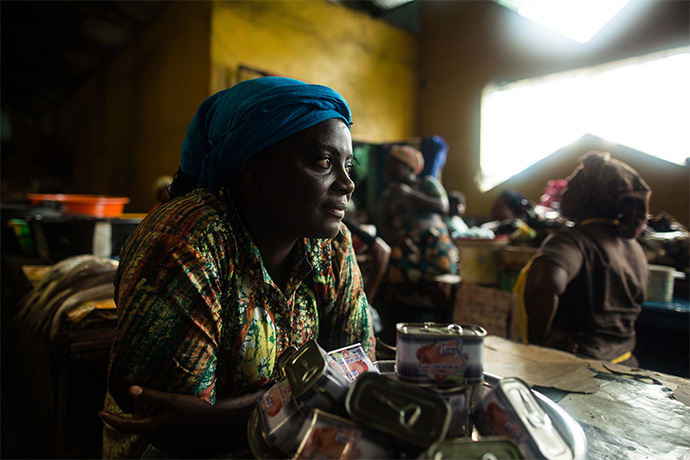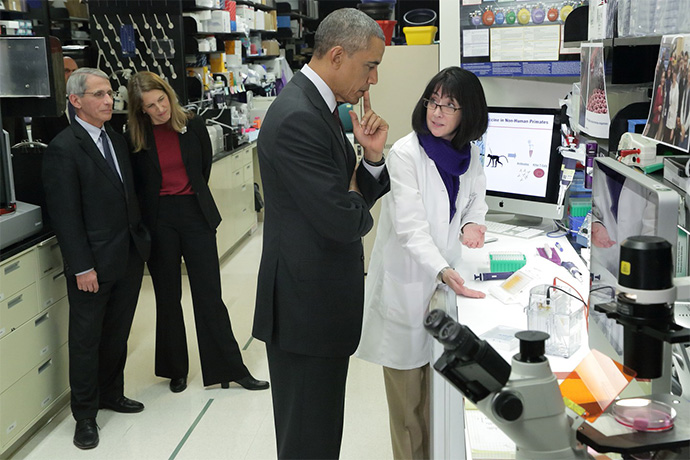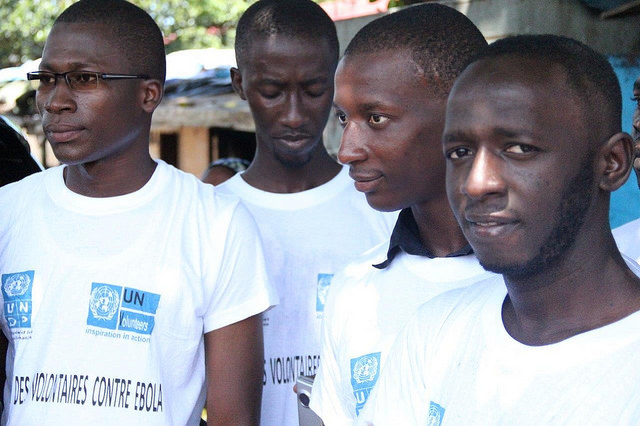No starker illustration exists of the ties between life sciences work and all work than in West Africa, where the Ebola outbreak is threatening the livelihoods of millions, says a new study from the United Nations Development Program (UNDP) released Dec. 10. Among the sobering findings:
- In Sierra Leone, home to 6 million people as of 2013, 65 percent of the infected are in the economically active 15-49 age group. Per-capita income there — which the World Bank reports was $680 in 2013 — fell by US$71 between January and October, “while 97 percent of respondents in a recent survey reported reduced incomes from farming, petty trading and service delivery.”
- Household incomes have dropped by 12 percent in Guinea and 35 percent in Liberia.
- “Microfinance, which is the main source of funding for many micro and small businesses, is being wiped out due to non-payment of loans and the death of many participants.”
- Women — who represent 70 percent of those involved in growing, processing and selling potatoes in Guinea and nearly as high a proportion in Liberia’s agricultural work force — are at higher risk of infection because they work as caregivers in their families and communities.
- “In Guinea, around 1,500 jobs were lost in the transport sector and 42,000 in the potato business. Suspension of classes has also made redundant 27,000 private teachers and administrative staff in Guinea and 40,000 teachers and administrative staff in Liberia.”
- “In Sierra Leone, all sectors have experienced a decline in employment as a result of the outbreak. For example, the country’s largest brewery has scaled down operations, culminating in a loss of 24,000 jobs within the supply chain.”

The findings build on other findings from recent UNDP reports on economic impact of the disease:
- According to UNFPA, an estimated 800,000 women will give birth in 2015 in the three countries, but some 120,000 of them may die from lack of access to emergency obstetrics care, while health services have been diverted toward Ebola response.
- In Liberia, 60 percent of markets are now closed and half of the mining and palm oil concessions have reduced their activity. Liberia was one of the world’s fastest-growing economies in 2013. A November report from the country said the country’s tax revenue is down 18 percent this year, and trade has declined by around 15 percent for 2014. Among its highlights: “Imports and exports have become problematic — companies trying to bring ships into the port have faced drastically increased insurance costs.”
- In Sierra Leone, only one-fifth of the 10,000 HIV patients on anti-retroviral treatments are still receiving them due to the current lack of health personnel available for non-Ebola care.
- The governments of Guinea, Liberia and Sierra Leone are experiencing a shortfall of US$328 million to be able to function at pre-crisis levels, with Guinea facing a $220-million financing gap. Liberia has had to sacrifice $20 million worth of infrastructure development and Sierra Leone $16 million since the beginning of the crisis.

Interrupted Rise
The outbreak comes just as the outlook for African economies — and corporate investment interest — has been rising. Africa as a whole saw economic growth of 4.5 percent in 2013, and up to 72 million jobs are expected to be created on the continent by 2020. West Africa’s economy grew by 6.9 percent in 2012 after 5.9-percent growth the year before, as countries such as Sierre Leone and Liberia gradually recover from wars. But nearly 250 million Africans face water shortages by 2020, and even as exports have been rising, nearly half of sub-Saharan Africans live in poverty.
The region has had the second highest growth in the Human Development Index (HDI) after South Asia in the past 10 years. “Of the 14 countries in the world that recorded HDI gains of more than two percent annually since 2000, 11 are in the Sub-Saharan Africa region,” reports the UNDP. “These top-performers include a mix of countries with or without resources as well as diversified and high-performing agriculture-based economies like Angola, Ethiopia, Mauritius, Rwanda and Uganda, with Sierra Leone showing the second-highest human development improvement in the world since 2000.”
Site Selection’s New Plant Database has tracked a handful of notable corporate facility investments in the region over the past few years, including an office and distribution operation from cocoa concern Agriterra in Kenema, Sierra Leone, and a $180-million steel plant from First Step in a new special economic zone at Port Loko, Sierra Leone, both announced in 2012.
The UNDP’s report calls for boosting informal and formal loan schemes and microfinance; stepping up support for the production of food, through cash transfers, equipment and seeds; and continued promotion of food and other commodities, noting that “continuing to build skills among the labor force is key to ensuring businesses can survive and improve themselves after the crisis has ended.”

